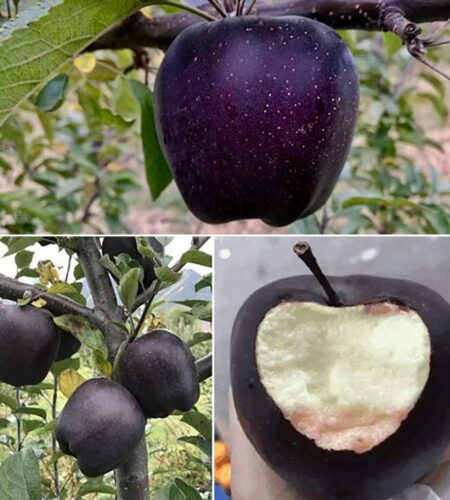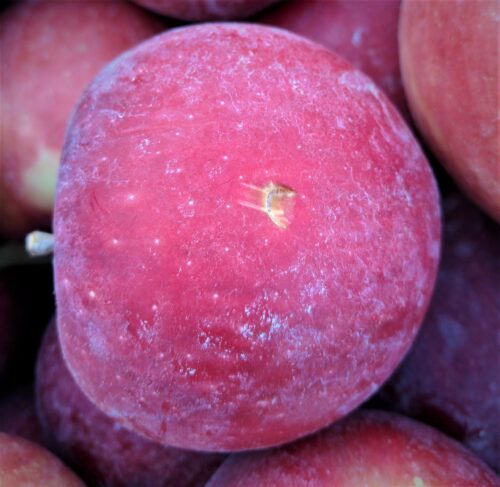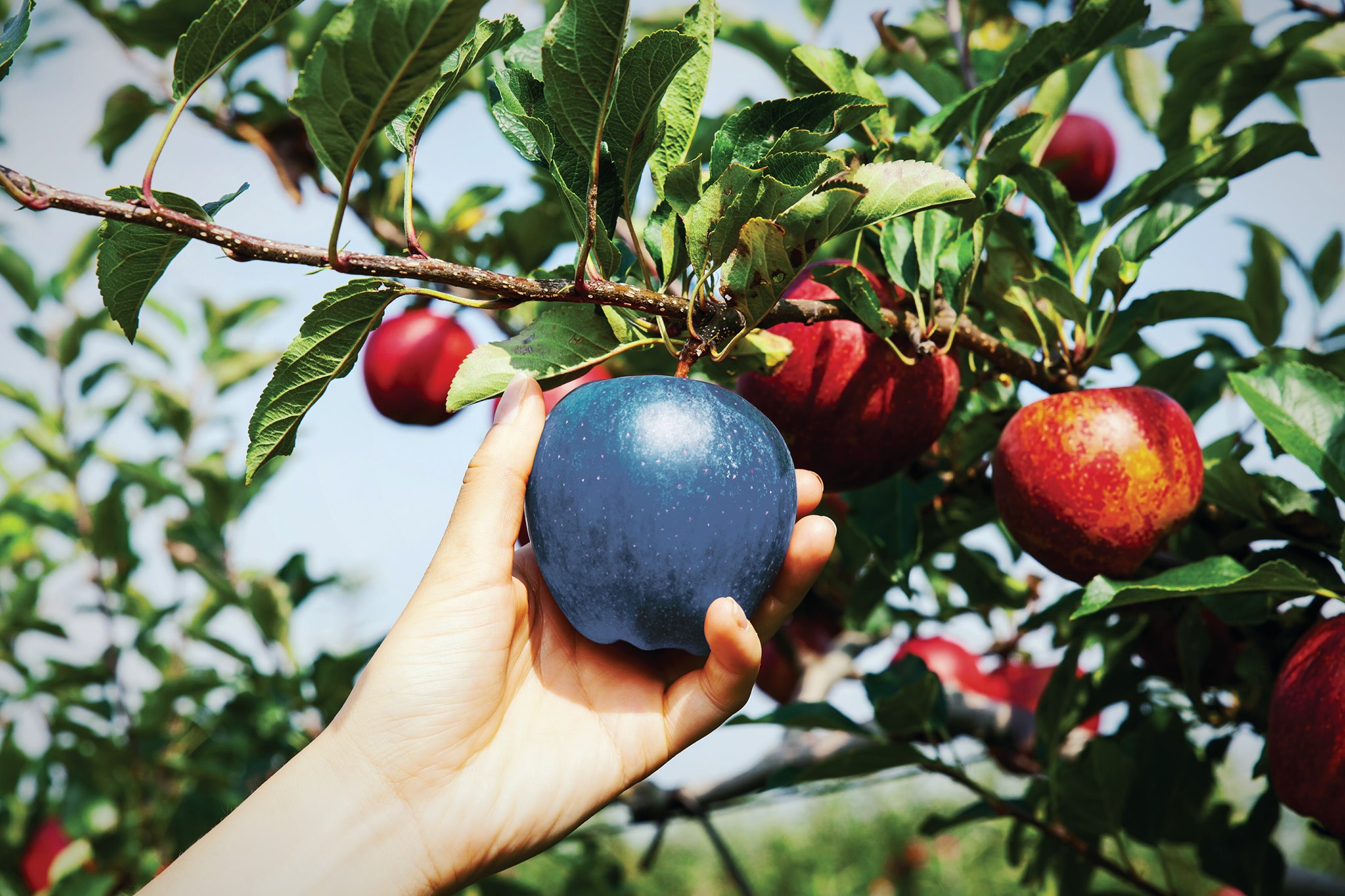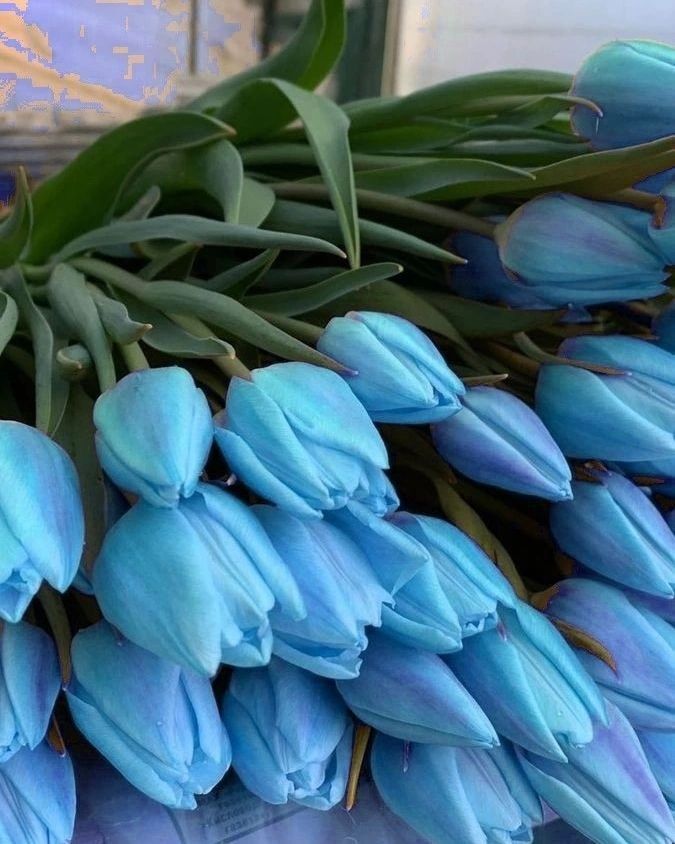Discover the Rare Blue Apple Varieties: Growing and Facts Guide for cultivating extraordinary orchard wonders.
Explore Rare Blue Apple Varieties: Growing and Facts Guide. Embark on a journey to discover the secrets behind these exceptional fruits.
Check out Red Custard Apple Tree Growing and Care Guide
Does Blue Apple Exist?

Absolutely, blue apples do exist, and they’re quite fascinating! Their distinct look comes from a natural coloring called anthocyanin, which is also found in other colorful fruits and veggies.
While the color might not be sky-blue, this special pigment gives the apple shades like deep purplish-red or even a really dark, almost-black color.
LEARN Apple Tree Care in Containers
Where Do Blue Apple Come From
It’s believed that heirloom blue apples first appeared as an opportunity seedlings in Middlesex County, Massachusetts, near Boston. By the early 1800s, they became popular as a cherished New England garden apple. The intriguing Blue Pearmain variety also made its way to England during the 1800s.
FIND Is Pineapple a Berry or Citrus Fruit?
Blue Apple Taste
The taste of blue apples offers a fascinating mix of flavors that vary among different types of apples, creating a sense of surprise with every single bite.
Different varieties of blue apples bring out distinct flavors, ranging from a touch of sweetness to a bit of tanginess, just like regular apples. Even though they have this special blue hue, the flavor is pretty much what you’d expect from apples you’ve had before. Whether you’re enjoying a Blue Pearmain or trying out a Black Oxford, you can relish all the different kinds of blue apples, whether raw or cooked. But remember, each kind of blue apple brings its unique flavor to the table, making the experience all the more special.
Check Types of Blue Orchids
Best Blue Apple Varieties
1. Blue Pearmain
Blue Pearmain (Malus domestic) is a heirloom variety from the Rosaceae family. It’s famous for its special blue-green skin and its sweet and slightly tangy taste, which people really enjoy when they eat it fresh or use it for cooking. Sometimes, you might notice a little bit of red and yellow colors on the apple, but it gets darker as it gets older.
2. Black Diamond Apple

The Black Diamond Apple stands out with its deep black-purple skin and bright white flesh. Its taste is a harmonious blend of sweet and slightly tart flavors, creating a delightful and refreshing eating experience. This unique apple variety is visually striking and offers a delicious balance of sweetness and tanginess.
3. Arkansas Black Apple

The peel of this blue apple variety has a waxy texture; it becomes darker with age. It brings an intense tartness, the Arkansas Black’s taste becomes mild with time.
Apple Fact: Among the blue apple varieties, this cultivar has an outstanding storage capability. If you keep it in a cool and dry place, Arkansas Black apples can stay good for many months without getting bad. And as time goes on, its taste keeps changing, getting sweeter and tastier.
4. Burgundy Apple

The Burgundy Blue Apple stands out with its deep red skin, often shaded with hints of green and purple. Its flesh is crisp and juicy, delivering a sweet and slightly tangy flavor. This apple variety offers a visually appealing look and a delightful taste that combines sweetness and a touch of tartness.
Note: Though not blue, the dark red hue may look blue-black in some light settings.
5. Blue Moon

The Blue Moon apple catches attention with its unique blue-purple skin with a pink-red blush that sometimes shines like a moonlit night. Its flesh is crisp and juicy, offering a pleasing balance of sweetness and tartness
6. Black Oxford Apple
The Black Oxford Apple stands out due to its dark purple-black skin, often with hints of red. Its flesh is firm and aromatic, offering a unique blend of sweet and tart flavors.
Check the best Types of Bananas
How to Grow a Blue Apple Tree
Growing a blue apple tree follows the same process as propagating other types of apple trees. The word “blue apple” usually describes an apple variety that might display a deep, purplish-red, or nearly black shade rather than a completely blue color.
Here are the tips for nurturing an apple tree from these distinct types, like the Black Diamond or Blue Pearmain:
1. Choose the Right Variety
Choose an apple variety with shades of deep red, purplish-red, or almost black skin, often called “blue apples.” Examples include the Black Diamond and Blue Pearmain.
2. Discovering the Ideal Spot
Find a location that offers full sunlight, well-draining soil, and good air circulation. Remember that apple trees favor full sunlight that gets at least 6-8 hours of sun daily. This encourages healthy growth and optimal fruit production.
3. Preparing the Soil
Prepare the soil by ensuring it’s well-draining and rich in nutrients. Adding compost or organic matter helps create a fertile environment for the apple tree to thrive. The pH has to be between 6.0-7.0.
4. Planting the Tree
Dig a hole slightly larger than the tree’s root ball. Gently place the tree in the hole, ensuring the roots are spread out. Fill the hole with soil, pat it down gently, and water thoroughly.
5. Watering and Nourishing
Regularly water the tree, especially during its early stages, mainly in dry periods. Provide a balanced fertilizer to support growth during early spring, following the recommended guidelines.
6. Pruning for Optimal Growth
Prune the tree annually to encourage proper airflow, sunlight penetration, and shape development in dormancy (late winter to early spring).
Remove dead or crowded branches to enhance overall health.
7. Managing Pests and Diseases
Monitor the blue apple tree for pests like aphids and diseases like apple scab. Apply appropriate treatments as needed to protect your tree’s health.
8. Caring for Winter
Before winter, add a layer of mulch around the base of the blue apple tree to protect its roots from freezing temperatures. Prune any remaining dead branches to encourage new growth in the upcoming season.
FIND Is Avocado A Vegetable Or Fruit?
Harvesting the Fruit
As the apples mature and attain their distinct color, gently twist or lift them to harvest. Ensure they’re ripe by their appearance, feel, and ease of separation from the tree.
Read the difference between Muskmelon vs. Cantaloupe
FAQs
Q.1: How do I store Blue Apple?
To store blue apples effectively, ensure they are harvested when fully ripe and handle them gently to prevent damage. Pre-cooling in the refrigerator before storage can help. Opt for a cool, well-ventilated storage area such as a basement or garage, and use containers like wooden crates with ventilation to prevent moisture buildup. Regularly check for signs of spoilage and remove any affected apples to prevent spreading. Maintain a humidity level of about 90%, and keep the temperature consistent between 30 to 40°F (-1 to 4°C). Avoid storing blue apples with ethylene-producing fruits, and consider individually wrapping them in newspaper for extended storage. Following these steps will help maintain the freshness and flavor of your blue apples over time.
Q.2: Are there any specific challenges in growing rare blue apple varieties?
While similar to growing other apple varieties, some challenges may include ensuring proper soil drainage, protecting against pests like aphids, and monitoring humidity during storage.
Q3: Are these blue apple varieties suitable for cooking or just eating fresh?
Blue apple varieties are versatile. They can be enjoyed fresh due to their unique taste and appearance, and they can also be used for cooking, baking, or making preserves.
Q4: Where can I find rare blue apple tree saplings or seeds?
You can find saplings or seeds at specialty nurseries, online gardening stores, or from local apple enthusiasts who may have propagated these unique varieties.
Q5: Can I graft or propagate my own blue apple trees?
Yes, you can graft or propagate blue apple trees using suitable techniques. This can be a rewarding way to grow these unique varieties.
Q6: How long does it take for blue apple trees to bear fruit?
The time it takes for blue apple trees to bear fruit varies based on factors like the variety, growing conditions, and tree age. It can take several years, usually around 3 to 5 years on average.
Q.7: Are Blue Apples Genetically Modified?
The above-mentioned Blue Apple Varieties are Natural and are not GMO.



